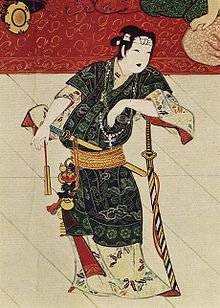Our website is made possible by displaying online advertisements to our visitors.
Please consider supporting us by disabling your ad blocker.
Kabukimono
This article needs additional citations for verification. (February 2008) |

Kabukimono (傾奇者) or hatamoto yakko (旗本奴) were gangs of samurai in feudal Japan.[1] First appearing in the Azuchi–Momoyama period (between the end of the Muromachi period in 1573 and the beginning of the Edo period in 1603) as the turbulent Sengoku period drew to a close, kabukimono were either rōnin, wandering samurai, or men who had once worked for samurai families who, during times of peace, formed street gangs. Some, however, were also members of more prominent clans—most notably Oda Nobunaga and Maeda Toshiie.
Previous Page Next Page


